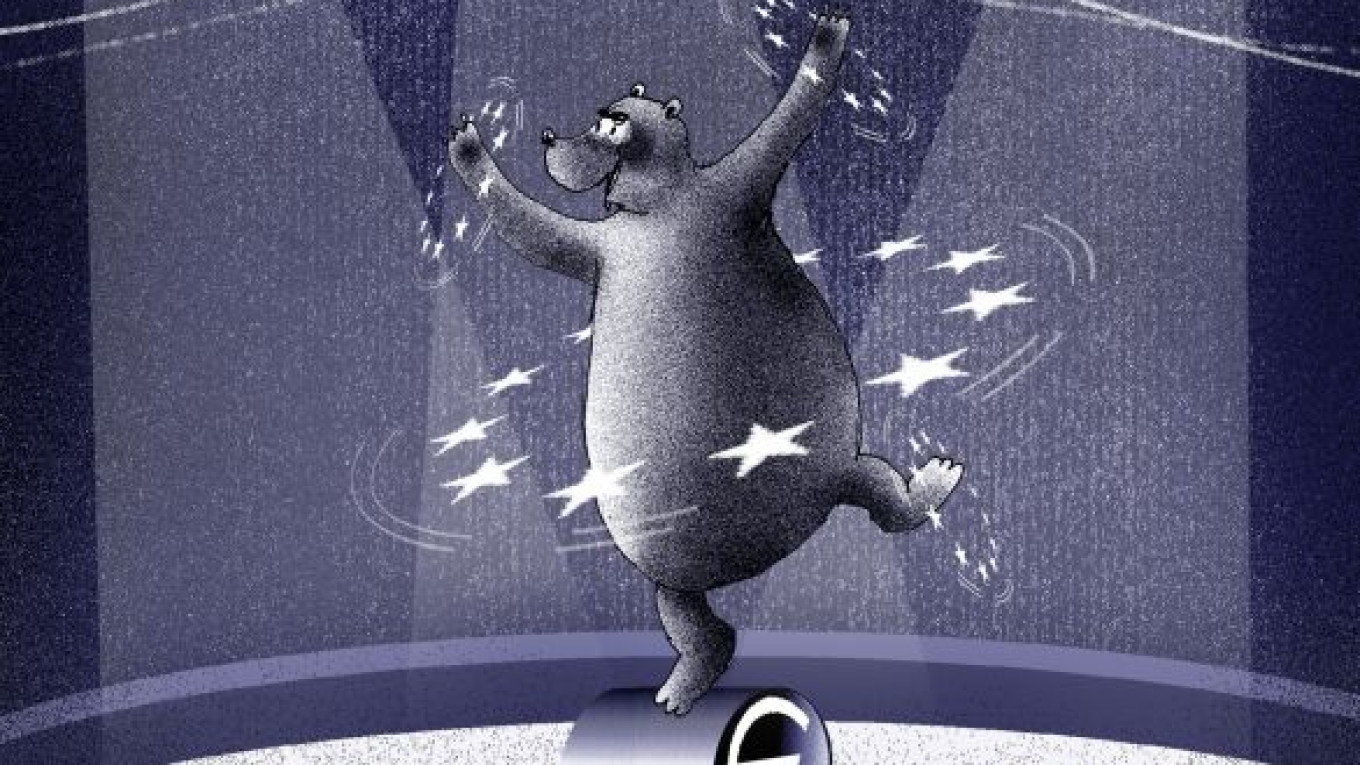It is no surprise that Russia and the euro area have important economic links. The euro area, despite disappointing growth and prolonged economic stresses, retains a very large share of global gross domestic product. At around 17.5 percent, the share is roughly 6.5 times larger than the Russian economy and almost 60 percent larger than China's. The euro area is also geographically close to Russia's most important economic centers east of the Urals.
The economic importance of the euro area for Russia is present in several dimensions, starting with trade flows. Around a third of Russian exports, measured by value, go to the euro area — a share that is five times larger than the amount of Russian exports that go to China.
The same importance of the euro area for Russia can be seen in terms of foreign direct investment. The euro area is the source of around three-fourths of all foreign direct investment, and the European Union as a whole accounts for almost 85 percent.
Finally, the significance can also be observed in terms of capital flows into the Russian banking sector. Of all the foreign bank claims in Russia, 69 percent came from the euro area, and almost 80 percent from the EU. This, incidentally, implies that there is also a significant correlation between the risk perception of Russian banks and euro-area banks, as measured, for instance, by five-year spreads for credit default swaps.
These significant and multifaceted links leave Russia open to shock waves from stresses in the euro area. But how can we measure the possible effects of a euro-area shock?
A good way is through a vector auto regression, or VAR, model, a widely used, simple and robust estimation procedure. Essentially, in it Russian GDP growth changes are assumed to capture all the links with the euro area in a joint fashion, without the need to specify these channels individually. (Series that represent an external "energy price shock," a variable of great relevance for Russia and a measure of an external demand shock from developing countries were added as control variables in the estimation).
The VAR results can be summarized as such: A euro-area shock is transmitted almost one-to-one to Russia. For example, a 2 percent GDP shock in the euro area would have a 2 percent GDP effect in Russia. These results would make Russia almost as vulnerable to a euro-area shock as a non-euro-area EU economy.
Nevertheless, these results are potential ones. The Russian economy has cushioning tools like its now-flexible exchange rate, and it can also potentially diversify away from the euro area toward other regions of the world, therefore reducing its exposure to a euro-area shock. A practical example of that would be, say, to increase exports to places like China and the other BRICS countries.
Nevertheless, it is not necessarily true that such a diversification would be economically optimal for Russia. This can also be assessed via a simple estimation, called gravity equation, that estimates exports as a function of the sizes of the respective markets (measured by their GDPs) and of the distances between markets (as a proxy for trade costs). The results show the shares of trade that are "economically optimal," or reflect economic fundamentals. This procedure would suggest a reference value to a possible Russian over/under trading with the euro area, China and the Commonwealth of Independent States.
The results of this additional estimation suggest that Russia indeed significantly "undertrades" with China, therefore suggesting a potential to reduce vulnerability by diversifying away toward more dynamic developing markets. But this would not necessarily happen via a reduction of exports to the euro area, whose share in Russian exports seem roughly in line with what the model would predict. Namely, Russia exports what it should to the very large and geographically close euro-area market. The real Russian "overtrading" would seem to be located elsewhere, namely, in the CIS markets.
The conclusions from my findings are twofold. First, the Russian economy's strong links to the euro area do carry with it the potential for Russia to be negatively affected by further euro-area economic stress. Second, Russia could indeed diversify economic links away from the euro-area market, but the potential benefits of geographical diversification should not be overestimated given that the strength of Russian economic relations with the euro area are likely structural in nature, reflecting the size of the euro-area market and the proximity of Russia to it.
Therefore, while chairing the G20 and having the Customs Union and the Eurasian Economic Community as stated priorities, Russia should not lose sight of the fact the euro area is and shall remain for the foreseeable future its most strategic external economic relation.
Lucio Vinhas de Souza is managing director and sovereign chief economist at Moody's Investors Service and former head of the Russia desk at the European Commission's Directorate General for Economic and Financial Affairs.
Related articles:
A Message from The Moscow Times:
Dear readers,
We are facing unprecedented challenges. Russia's Prosecutor General's Office has designated The Moscow Times as an "undesirable" organization, criminalizing our work and putting our staff at risk of prosecution. This follows our earlier unjust labeling as a "foreign agent."
These actions are direct attempts to silence independent journalism in Russia. The authorities claim our work "discredits the decisions of the Russian leadership." We see things differently: we strive to provide accurate, unbiased reporting on Russia.
We, the journalists of The Moscow Times, refuse to be silenced. But to continue our work, we need your help.
Your support, no matter how small, makes a world of difference. If you can, please support us monthly starting from just $2. It's quick to set up, and every contribution makes a significant impact.
By supporting The Moscow Times, you're defending open, independent journalism in the face of repression. Thank you for standing with us.
Remind me later.


